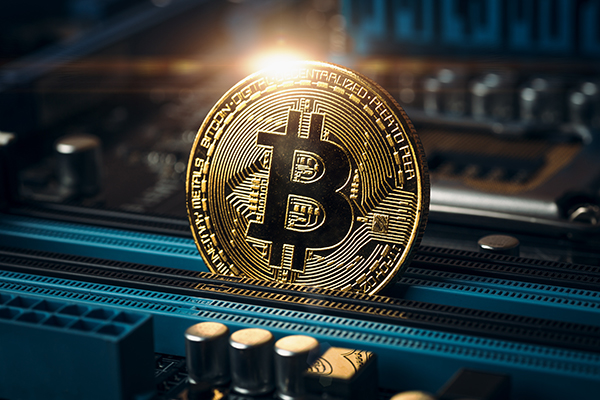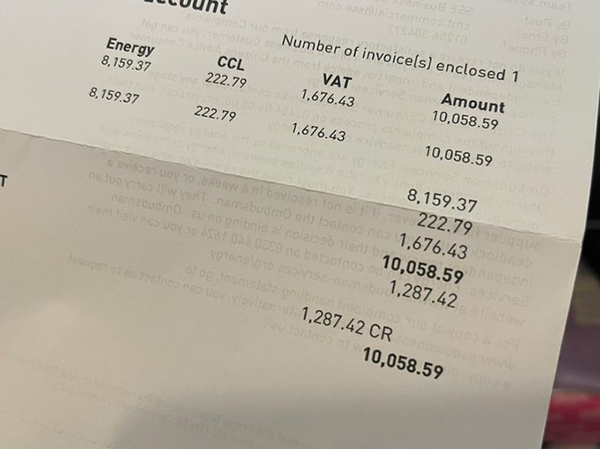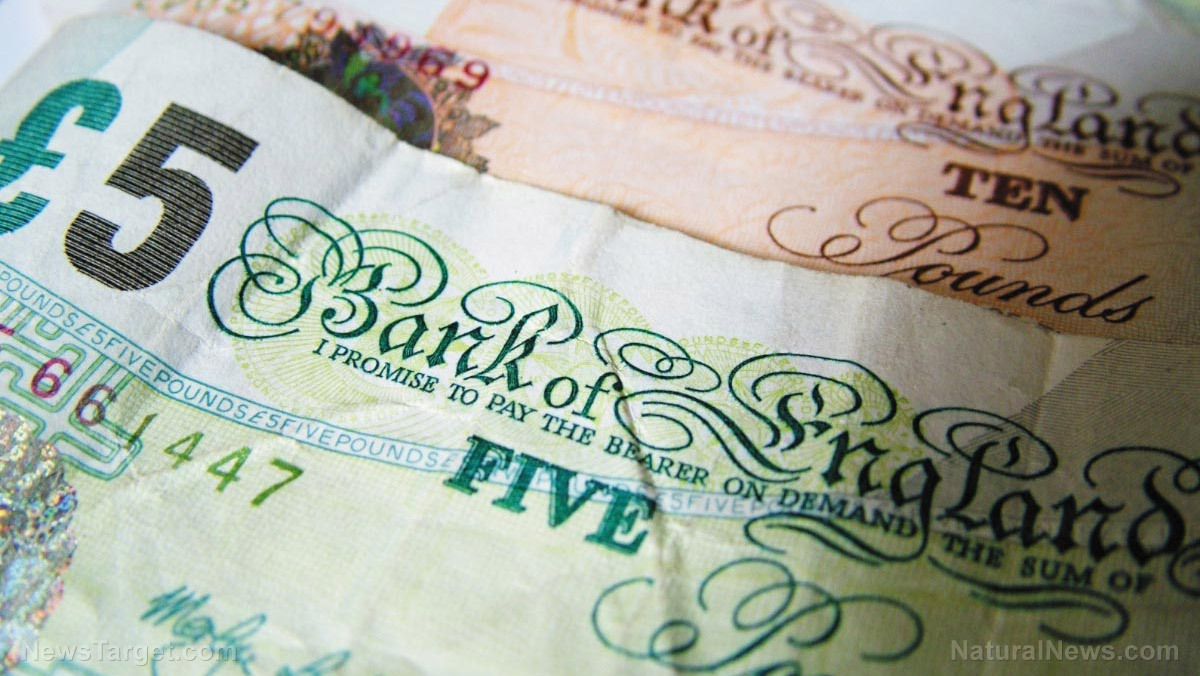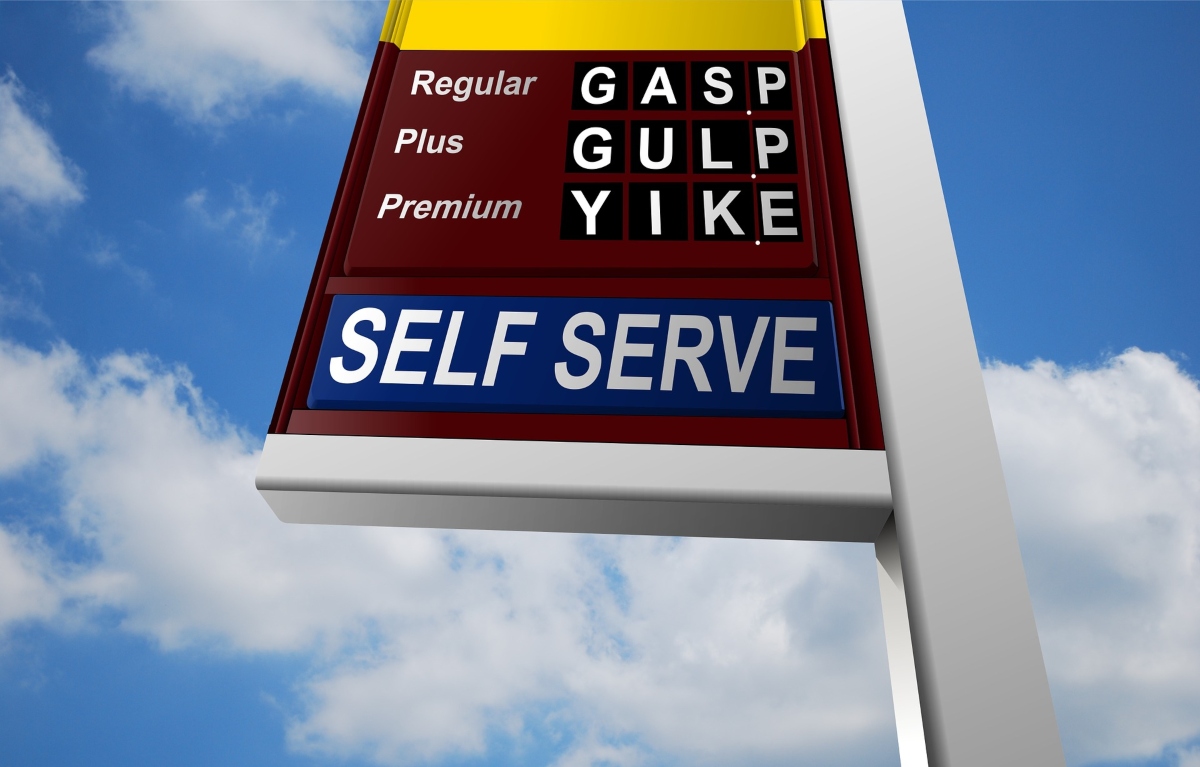We have DECODED the globalist plan to destroy Bitcoin and the DeFi crypto ecosystem… and they seek to replace it with heavily regulated digital wallets under totalitarian central bank control
12/07/2021 / By Mike Adams

You’ve probably noticed that we have been covering cryptocurrencies and the “DeFi” (Decentralized Finance) ecosystem over the last couple of days, releasing interviews with several important people on the topic (see below).
The upshot of what we appear to be uncovering is that globalists are carrying out a plan to destroy Bitcoin and the DeFi cryptocurrency ecosystem from within, then replace it with globalist-run central bank electronic currencies which they will claim are “safer” because they are heavily regulated. This is, of course, all part of the globalist attempt to enslave humanity under digital currency controls, where they can track your every expenditure, seize funds from your accounts in mere seconds, inflict negative interest rates on your account holdings and even loot your digital wallets as “automatic taxation” operations.
Their plan, described here, is a malicious operation to cause extreme losses, suffering and growing distrust in the non-regulated crypto markets. Below, you’ll learn how this plan works and why it poses such an existential risk to the crypto markets (and faith in DeFi in general).
For the record, we are 100% pro cryptocurrency, pro free market, pro decentralization and strongly opposed to globalist control or central bank fiat currency money printing. We want to see a world where money is decentralized and unable to be manipulated by anyone. We also recognize that cryptocurrency will play a significant role in the future of financial transactions for human civilization. That said, we strongly oppose deceptive operators who are harming the cryptocurrency ecosystem. That’s the focus of this article: Exposing the sabotage operations and hoping that we can make crypto more honest, reliable and viable for the future.
How globalists plan to wreck Bitcoin and the crypto ecosystem
Based on information that has come to light concerning Evergrande, Tether and a sudden spike in regulatory targeting of cryptocurrencies, we believe that globalists are setting a giant trap by building — and then destroying — a global crypto bubble that wipes out retail participants. They are pulling this off, in part, through what appears to be the systemic counterfeiting of “stablecoins” which are supposed to be backed by dollar deposits but actually aren’t.
As we covered yesterday, the Tether stablecoin company, based in Hong Kong, has already been declared to be engaged in criminal operations by the New York State Attorney General. The company uses “deceptive” practices to mislead investors, according to the NY AG. Even worse, Tether still refuses to submit to any legitimate accounting audit of its holdings, sending up huge red flags in the minds of informed observers.
Importantly, Tether’s “stablecoins” are created out of thin air and are used to carry out about two-thirds of Bitcoin purchases.
Thus, when Bitcoin holders talk about the hard limits (and built-in scarcity) of Bitcoin itself, these limits become meaningless when another coin that’s created out of thin air and has no scarcity can be used to purchase Bitcoin, driving its price ever higher. The obvious question is haunting many crypto participants right now: What would Bitcoin’s price actually be if not for all the Tether purchases?
Over $70 billion in “digital fiat” created by Tether without any mining, audits or proven deposits to back it
The price of Bitcoin has been wildly inflated by Tether purchases, and the Tether company has so far created over $70 billion in Tether coins. They are supposed to have $70 billion in dollar deposits to back it up, but they don’t. And since it’s entirely unregulated, they technically don’t have to submit to any accounting and can simply “claim” to have whatever deposits they want. (Making “self-affirmation” statements instead of engaging in rigorous accounting audits.)
This is the equivalent to a central bank claiming they have, say, 10,000 tons of gold in their vaults while refusing to have their gold deposits audited. In fact, that’s the situation we all currently face with central banks: They print fiat currency while claiming to have deposits, but they refuse to allow auditing of their books. (Remember Ron Paul’s “Audit the Fed!” rally cry?)
Cryptocurrency was supposed to be the alternative to all this: No centralization, no money printing, no devaluation of the currency. Yet Tether adopts almost exactly the same behaviors as the Fed, but in the digital realm: Massive “stablecoin” printing, centralization of the money supply and zero audits.
So Tether has, in essence, become the digital central bank of a digital fiat currency ecosystem that isn’t bound by any limits or scarcity whatseover. The central promises of cryptocurrency — decentralization, scarcity, honest money — all evaporate. Suddenly the world of crypto is just another fiat currency money creation machine, but operating in the digital world of crypto instead of the central banking world of mainstream finance.
The plot to burst the crypto bubble and destroy faith in DeFi
If a globalist cabal wanted to tear down the cryptocurrency players they don’t control, the most effective way to carry out that task would be to infiltrate the crypto world and flood its digital money supply with a massive stream of “counterfeit” stablecoins created out of thin air. Drive the crypto bubble into a an upside frenzy, get everybody possible to buy in, then yank the rug out from under the whole system with an engineered destruction of the crypto money supply, causing a near-instant, widespread collapse of crypto asset prices and a mad rush into so-called “safe” digital wallets that are run by the central banks and backed by government regulators.
How can this be engineered? Through a collapse of the Tether stablecoin. And given that Tether is not audited and is widely believed to be largely based on empty promises rather than real deposits, all it would take is one faith-busting event that causes Tether holders to rush for the exits in a mass redemption panic. While the first few to redeem their Tether coins might get paid, it likely wouldn’t take long before Tether ran out of liquid assets, given that it now claims it holds assets in the form of “accounts receivables,” not simply dollar deposits.
This means Tether loans money to various entities and counts these loans as “assets.” They are holding the paper for the loans, in other words, and they are counting on repayment over time in order to return the loan principal (plus interest). But what happens if the company that received the loan amount goes belly up? (According to the Tether website, the company currently holds about $30 billion in commercial paper.)
Enter Evergrande, China’s Ponzi scheme property developer. Just as we warned weeks ago, the company is now in a state of accelerating default. Unable to make interest payments to foreign bond holders, Evergrande has now publicly admitted it is unable to meet its payment obligations.
Many crypto analysts believe that Tether is holding Evergrande paper as a significant portion of its “assets.” No one knows for sure, since Tether won’t submit to an audit. But if Tether’s assets are tied up in Evergrande debt paper, and if Evergrande is now in default, then it stands to reason that even if Tether had full backing of all its stablecoins before the Evergrande fiasco, the default by Evergrande would wipe out potentially tens of billions of dollars in Tether’s accounts receivables, rendering Tether unable to make good on redemptions on all its coins.
As Bloomberg Businessweek asks in a headline article, “Anyone Seen Tether’s Billions?” The story, published just one month ago, continues:
A wild search for the U.S. dollars supposedly backing the stablecoin at the center of the global cryptocurrency trade—and in the crosshairs of U.S. regulators and prosecutors…
Exactly how Tether is backed, or if it’s truly backed at all, has always been a mystery. For years a persistent group of critics has argued that, despite the company’s assurances, Tether Holdings doesn’t have enough assets to maintain the 1-to-1 exchange rate, meaning its coin is essentially a fraud.
Then, this year, Tether Holdings started putting out a huge amount of digital coins. There are now 69 billion Tethers in circulation, 48 billion of them issued this year. That means the company supposedly holds a corresponding $69 billion in real money to back the coins—an amount that would make it one of the 50 largest banks in the U.S., if it were a U.S. bank and not an unregulated offshore company.
…the size of Tether’s supposed dollar holdings is so big that it would be dangerous even assuming the dollars are real. If enough traders asked for their dollars back at once, the company could have to liquidate its assets at a loss, setting off a run on the not-bank. The losses could cascade into the regulated financial system by crashing credit markets. If the trolls are right, and Tether is a Ponzi scheme, it would be larger than Bernie Madoff’s.
“It’s not a stablecoin, it’s a high-risk offshore hedge fund,” said John Betts, who ran a bank in Puerto Rico Tether used. “Even their own banking partners don’t know the extent of their holdings, or if they exist.”
Importantly, a criminal investigation by the AG of New York State has already concluded that Tether misled investors about significant losses it incurred. The subhead of the NY AG press release, in fact, states:
Bitfinex and Tether Deceived Clients and Market by Overstating Reserves, Hiding Approximately $850 Million in Losses Around the Globe
So Tether and Bitfinex already have a history of covering up significant losses in order to deceive market participants. That history, combined with the astonishing lack of legitimate financial accounting, should set off alarm bells in the minds of investors. If Tether were your local bank and you became aware of such practices, you would immediately withdraw your money from that bank and take it somewhere that wasn’t so sketchy.
What happens when the largest holders of Tether decide to do the same thing?
Even more importantly, can the timing of such a Tether redemption be weaponized to achieve an epic crash in the public’s trust of the entire cryptocurrency ecosystem?
It looks like a trap that will be triggered by The Big DIGITAL Short… “The Bit Short”
That’s the scenario that we believe is being set up right now: A global crypto “trap” that will be triggered by a sudden, mass redemption of Tether stablecoins, with the express purpose of triggering a cascading collapse of the entire crypto ecosystem, initiated by the sudden destruction of what is essentially the “digital central bank” of crypto. The sudden destruction of over $70 billion in stablecoins would be so devastating to world finance that it even places assets at risk outside the crypto ecosystem.
“…[W]hen I asked where Tether was keeping its money, he declined to say,” writes Bloomberg author Zeke Faux. “It was hard to believe that people had sent $69 billion in real U.S. dollars to a company that seemed to be practically quilted out of red flags.”
In that statement, Faux nails it: Crypto traders are operating on blind faith, utterly oblivious to counterparty risk. Even worse, they never suspect that globalist interests might be infiltrating their entire system with a plan to bring the whole thing down, right as they unveil a new “trusted” digital wallet ecosystem run by globalist central banks.
Importantly, because we are still in the bubble phase of the crypto mania, people think they’re making money so they don’t care about how sketchy the entire thing is. Also from Bloomberg:
The biggest traders on these exchanges told me they routinely bought and sold hundreds of millions of Tethers and viewed it as an industry standard. Even so, many had their own conspiracy theories about the currency. It’s controlled by the Chinese mafia; the CIA uses it to move money; the government has allowed it to get huge so it can track the criminals who use it. It wasn’t that they trusted Tether, I realized. It was that they needed Tether to trade and were making too much money using it to dig too deeply. “It could be way shakier, and I wouldn’t care,” said Dan Matuszewski, co-founder of CMS Holdings LLC, a cryptocurrency investment firm.
It is this obliviousness, in fact, that allows the crypto ecosystem to be infiltrated by bad faith actors. And since central banks can print unlimited fiat currency themselves, they can easily print the money they need in order to buy into the crypto markets and dominate that sphere. This means they can also buy enormous quantities of Tether and organize a planned redemption of Tether on any given “D-Day” attack designed to obliterate the Tether entity.
Put another way, Tether’s risks are multi-faceted. They not only face the risk of default from Evergrande or other Chinese corporate entities that have borrowed money from Tether, they also face the risk of central bank organized financial attacks that are essentially well-crafted financial warfare moves designed to take down the unregulated crypto ecosystem and destroy public faith in non-regulated cryptos.
I call it the “crypto reset” theory, and it would be the perfect storm weapon system for the globalist banking cabal to assert its dominance for centuries to come. When it comes to global financial control, after all, this is war, and the central banks will stop at nothing to cement their position for the future of human civilization.
Summary: They build the bubble, then destroy it, then offer their solution of global control
In summary, we believe the crypto ecosystem is being deliberately led into a massive bubble to ensnare as many people as possible in order to maximize the psychological impact of the destruction of that bubble. The destruction can be easily achieved due to the highly leveraged state of key crypto players — apparently including Tether — who are all vulnerable to self-reinforcing downside market action. Once the morale / faith of typical retail crypto investors is shattered, then it’s a panic for the exits, and the entire crypto ecosystem becomes a bloodbath.
That’s when we find out just how insolvent the entire house of cards has become. And once that is accomplished, you’ll see the near-instant rollout of “trusted” digital wallets from central banks and various governments of the world, all of which will be promoted as the “safer” alternative to the “dangerous” unregulated cryptos that cratered.
Heck, they might even claim their digital cryptos are backed by gold and silver, since they’ve been buying up gold supplies for years, perhaps in anticipation of precisely this sort of moment.
Watch my recent interview with David Morgan for some details on this. My podcast video follows that, and then finally a lengthy interview with John Perez who has even more to offer on all this.
Do you disagree with this analysis? Post your own commentary or analysis on Brighteon.com, the free speech video platform. I spent millions of dollars (in fiat) to build it, precisely so that people could engage in debates and conversations about things that are happening in our world.
Brighteon.com/b5158fef-5aed-47ca-81c1-b77cf063fdb4
Full podcast explaining all this:
Brighteon.com/915151e5-acce-4e5c-be6b-2aa5be093e14
Full (lengthy) interview with John Perez, the crypto investigator who co-created the “Crypto Conspiracy” series with David Morgan:
Watch for more interviews and podcasts each day at:
https://www.brighteon.com/channels/hrreport
Submit a correction >>
Tagged Under:
bitcoin, central banks, crypto, cryptocurrency, DeFi, Evergrande, Federal Reserve, finance, Money Printing, risk, stablecoins, Tether
This article may contain statements that reflect the opinion of the author
RECENT NEWS & ARTICLES
COPYRIGHT © 2017 RISK NEWS





















